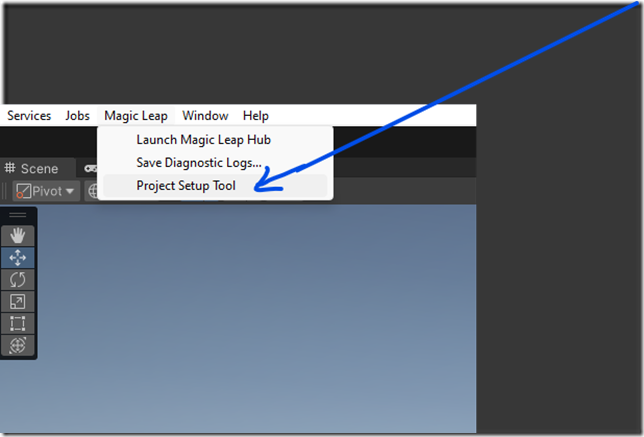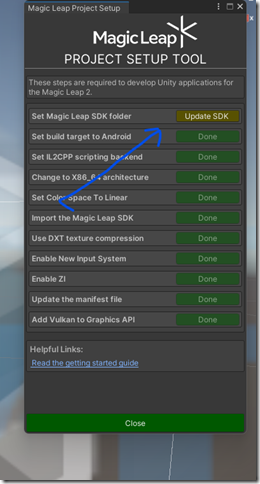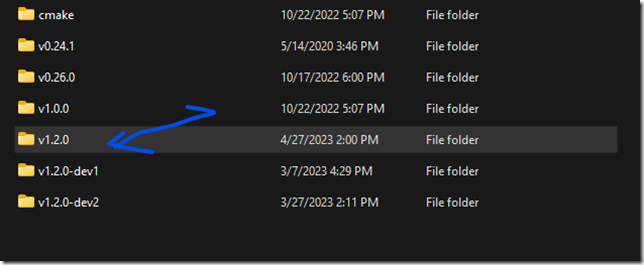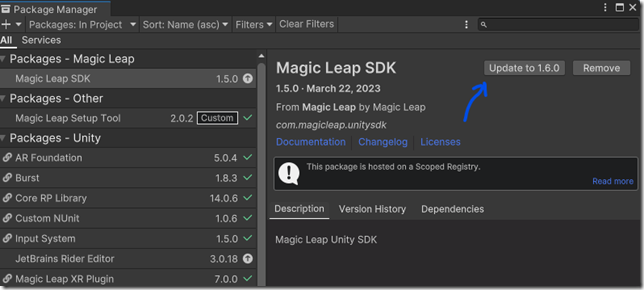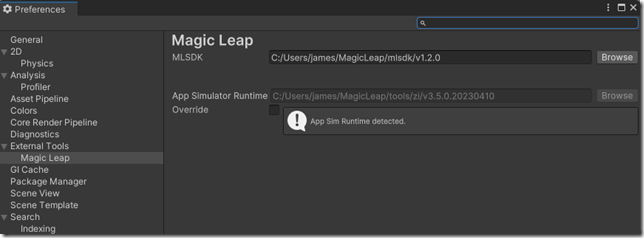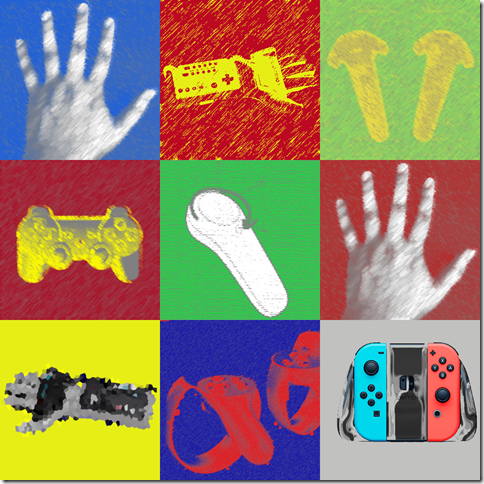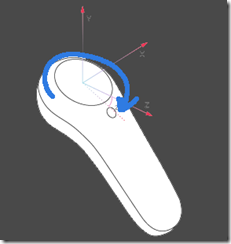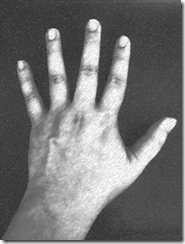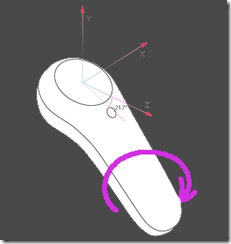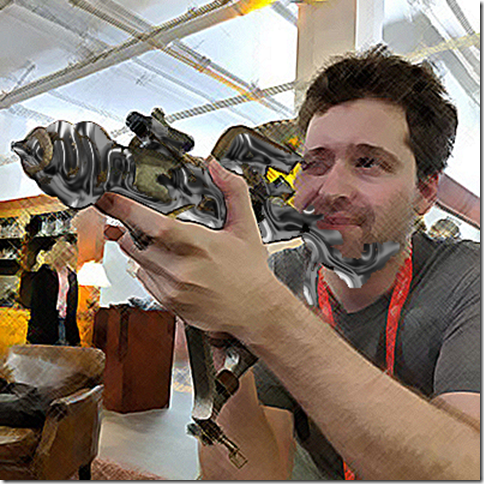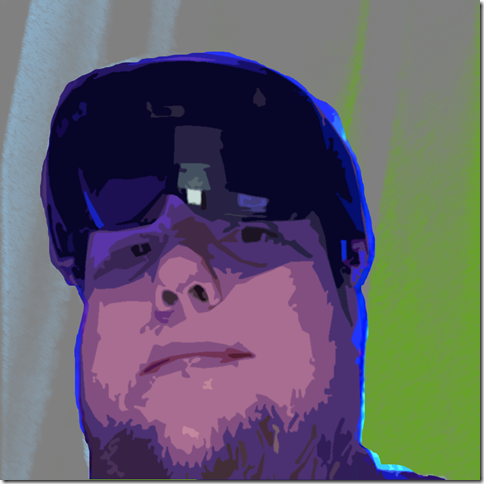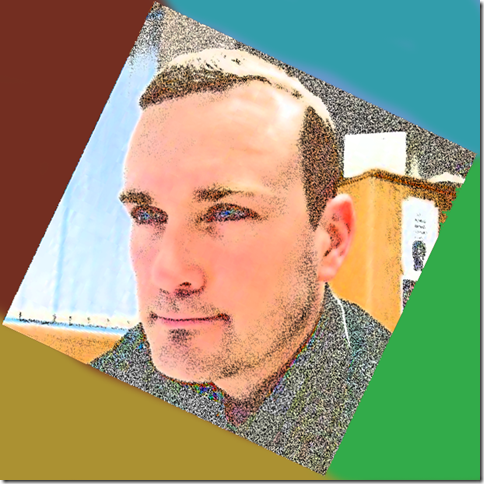
Suzanne is the CEO of BadVR – which IMO wins the prize for best company name and probably could easily make a top 10 list for band names, also. Suzanne’s company works with the fascinating world of data visualizations in VR and MR. She is also the recipient of one of the coveted 2019 Magic Leap grants and is a member of Magic Leap’s Independent Creator Program. I met her briefly at an MR event in Mountain View, CA in early 2019 and besides being an amazing advocate for the importance of true 3D data visualizations in spatial experiences, has successfully shown everyone how to be a leader and promoter of mixed reality in the XR world.
What movie has left the most lasting impression on you?
This one is tough! I’m a huge film buff and there have been so many movies that have deeply impacted me and altered my understanding of the universe.
That being said, I think the most impactful film I’ve ever watched is “The Holy Mountain” by Alejandro Jodorowsky. It’s such an explosion of creativity, a surrealistic fever dream that functions on so many levels as a commentary on the human desire to seek truth and enlightenment. Jodorowsky is unlike any other filmmaker out there, a true magician that makes film into high art without losing the ability to make impactful statements about the universal human condition. Any of his films could really be considered my favorite but “The Holy Mountain’ in particular speaks to me the most because it best captures the hero’s journey; our collective desire to seek something greater from life than what we’re given. A lot of surrealistic film is just weird for the sake of being weird and therefore loses impact because it doesn’t use the symbolism of surrealism to make any sort of deeper statement. Jodorowsky is a surrealist in the best sense of the term – all his bizarre unexpected images convey meaning and activate archetypical feelings, drives, and desires in his audience. He’s a master of the subconscious and knows how to access and wield communicative power in this area. Because of this, he’s my creative hero and I look to his work often for inspiration, especially when attempting to craft products that have the ability to touch user’s subconscious. I think this is key when unlocking broad market appeal for products or film or art in general. To really touch and impact a wide audience the experience, the artist or creator must touch on, and involve, a universal archetype. Jodorowsky’s films taught me this lesson and showed me how to execute on it. I want to give a big shout-out and thank you to my filmmaker friend Ryan, who introduced me to them. He, in many ways, has fundamentally changed how I approach any creative challenge by showing me Jodo’s work.
Beyond “The Holy Mountain,” I’m a big fan of “Belladonna of Sadness” (you will not find a more beautifully animated film ever), “Apocalypse Now” (Brando as Kurtz and his monologue at the end talking about the clarity of evil is a perennial favorite; combining Conrad’s “The Heart of Darkness” with the Vietnam war was a stroke of pure genius), “Funeral Parade of Roses” (a Japanese film that sets the ancient story of Oedipus into the transgender alternative subculture in 1960s Japan; I love it for its ability to utilize archetypical images and stories in an unexpected and creative way), “Hiroshima Mon Amour” (any media by Marguerite Duras is an automatic favorite), and “Last Tango in Paris” (I adore Brando, he’s an absolute legend, and this film touches on so many truths of the human existence, our longing for connection, the power of anonymity, my own personal life makes this film more powerful to me than it will to many, but none the less I adore it). And of course, the visual style and occult symbolism of Dario Argento’s films is a forever favorite (“Suspiria” being the pinnacle of Argento’s work IMO).
Lastly, Fellini’s “8 1/2” was the first film I watched as a child that really unlocked for me the power of cinema and storytelling. Prior to watching it, I had dismissed film as some inferior commercial medium. I saw it as cheap mindless entertainment for the masses without substance or meaning. For me at that time, my understanding of film was limited to boring and poorly made summer blockbusters. I remember clearly popping in the 8 1/2 VHS tape at age 17 without any expectation, just another mindless story to pass the long summer hours of adolescence. But the story that jumped out from the screen – starting with Fellini’s infamous opening dream sequence – absolutely captivated me. I found myself profoundly touched at the end of the film, crying even, and realized that I had been changed forever for having watched it. The message of the film – our flawed desire for human connection and all the broken and dysfunctional ways we pursue it – resonated with me at such a level that I have, decades later, never forgotten that moment. From that point on, I considered film and storytelling a high art that held the potential to change the world. Of course, not all film or stories rise to this potential and I’ve continued to be disappointed by mainstream commercial film in such a major way that I don’t even engage with it anymore. But 8 1/2 made me realize the potential of film as a medium for spiritual transformation. It showed me the power of storytelling had to bring humanity together and demonstrated the medium’s ability to hold up to the audience a mirror of themselves, helping them pursue a deeper understanding of both themselves the world around them.
Obviously, I adore film. It is one of my biggest sources of creative inspiration for all my technical work. I love immersive tech because one builds experiences, not screens. MR holds the same potential to affect deep spiritual change and transformation in users and that interests me immensely.
What is the earliest video game you remember playing?
LOOM! I remember playing it on the first computer my father bought for our family, when I was 6 or 7 years old. I remember spending hours and hours sitting in front of the computer playing, captivated by the beautiful game art. LucasFilm games are the best, but in particular Loom really did it for me. I loved (and still love) that the primary way Bobbin Threadbare (main character) interacted with his world was through music and sound. Such an original and creative idea!
Plus, you could cast spells to literally rip apart the fabric of existence, calling forth the lord of the dead, ripping open cemeteries to speak to the souls of the deceased. You could exist beyond space and time and your character could visit this beautiful lake floating in the void, populated by swans who spoke to you in parables of truth. As a goth kid and a lover of poetry, this was beyond transformative for me. I wanted to live in Loom! Additionally, the game came with this amazing backstory about a world full of guilds and weavers of destiny. I used to listen to the backstory tape, complete with a dramatic reenactment, and pretend I was Bobbin Threadbare. Loom will forever be my favorite game of all time.
Myst is a very close second!
Who is the person who has most influenced the way you think?
This is a difficult one – there have been so many amazing mentors in my life and each one of them has taught me something important, about myself, about my experience of the world.
As mentioned, Jodorowsky has been a major influence on me and all that I create. I’ve followed him around the world and I’ve actually met him in real life. I was fortunate enough to have him read my tarot in Paris and that reading truly changed my life. I won’t go into details because it was a deeply personal reading, but it transformed me without doubt. I also was lucky enough to meet him again at the Egyptian Theater in Los Angeles and at this event he dropped many nuggets of wisdom as well.
I’ve also learned a lot from the coterie or filmmaker friends that I’ve developed here in Los Angeles. The one in particular who introduce me to Jodorowsky has taught me a lot about the creative journey. He’s taught me how to dive into my creative subconscious to identify those valuable universal, broadly resonate true ideas. I’ve always been fascinated with the ability to broadly affect so many different types of people with one single idea and I wanted to translate that to my products. When you talk to someone who wrote or directed a hugely successful film, you find they have this ability to take a concept and distill it down into its most basic form. However, instead of that process being reductive or simplistic, you find that this distillation strengthens the idea and makes it more crystalline and clear and most importantly, universally accessible. The ability to take complex, nuanced, ideas and make them resonate with the broadest audience possible is one that I value highly. I’m very glad to have had a group of people who’ve helped teach me this skill. Regardless of the difference in our industries.
When was the last time you changed your mind about something?
Whew boy, I change my mind all the time, constantly, on a second to second basis! I’m always ingesting data about my world, through experiences, books, travel, websites, music, films, poems, and products. Even subconsciously, my mind is always picking up on new data about my world, which then changes my understanding of the universe. Plus, I believe everything constantly changes, so I have to keep pace with this change and adjust my thoughts and theories to mesh with the latest information.
A system that runs off absolutes and stasis is brittle and bound for failure. Only by being nimble and changeable can any system truly be strong and resilient. As such, I agree very much with Nassim Nicholas Taleb and his concept of anti-fragility. Anti-fragility involves growth through stress and I’d like to think all of my internal world models fall into this category by being responsive in real time to new data that stresses their limits, structures, and boundaries.
What’s a skill people assume you have but that you are terrible at?
Everyone assumes I’m skilled at math because my company works with data. But I’m actually numerically dyslexic (yes, it’s a real thing) and numbers have always been a real struggle for me. That’s one of the many inspirations for BadVR – my desire to work with data but my lack of technical skill with which to do so. I am in many ways the non-technical person for whom my product is built; I am my user. This gives me the power and the passion to build and also gives me the empathy needed to deliver an effective product that makes data accessible to everyone.
Of course, being acutely aware of this shortcoming I’ve assembled a team of very highly talented mathematical geniuses that augment my own weaknesses. So, to allay any question about my company’s ability to deliver a highly technical product, I want to underscore the idea that my company is not solely comprised of me. The heart and soul of BadVR is our team, and they are deeply capable in all the ways that I am not. That variety of skills and talent is what makes us powerful. We all balance each other’s weaknesses and strengths and, in doing so, create something better than any of us could ever achieve independently.
What inspires you to learn?
I don’t need inspiration for this! I’m endlessly curious about everything, all the time. I never learned to stopped asking “why?” Learning is my default state of being. Anytime I see anything, or experience anything, it inspires me to ask more questions, to dig deeper, to understand further. My google search history is full of things like “how did dinosaurs procreate? What is dirt? Why is dark meat dark?” I just wonder and google and learn all the time. Every experience is an impetus for learning; a reason to dive into the whys, hows, and whats of yet another line of inquiry.
What do you need to believe in order to get through the day?
I have to believe that life doesn’t end with death. That I will again see the people I love who I’ve lost. If there isn’t an afterlife or there isn’t an alternate timeline we’re we meet again, I can’t continue. I’ve lost too many loved ones to be able to function without the belief that I will see them again. It goes without saying then that I believe in reincarnation, in the broadest sense. I strongly believe that the people we love never leave us and that in some way we end up back together. It’s not an evidence-based belief – besides anecdotal evidence anyways – but I must believe it. I do believe it. I will always believe it. Other, the loneliness is crushing, overwhelming; the feeling akin to being forever a planetary stranger at the very end of the world.
What’s a view that you hold but can’t defend?
I have plenty of beliefs that don’t have scientific, evidence-based support. I can always defend every belief I have if you allow anecdotal evidence or emotional appeals. Some examples include my belief in the tarot, in astrology, in dream work, psychic powers, aliens, the collective subconscious, Bigfoot, the Missouri Skunk Ape, and ghosts. I’d be more than happy to argue their existence on an emotional and anecdotal level with anyone. But science of course doesn’t support or embrace such parapsychology and cryptozoology. This doesn’t stop me from believing, though. Many of the most important questions in life cannot be answered by science. I think the scientific method is important for lesser questions but for the big questions of life like “Why are we here? What is our purpose? What is the meaning of life?” — science fails. I’m more interested in the answers offered by faith and spirituality than I am in the answers offered by science, for these sorts of questions. In the face of the eternal, science can seem so small and pedantic. But of course, for the mundane it is very important.
What will the future killer Mixed Reality app do?
Visualize data and allow for immersive analysis! Data is the killer app for mixed reality. I firmly believe that, and I fully believe my company, BadVR, will be the industry standard tool for working with data immersively. I may be biased as BadVR is my company, but hey that’s what I believe! Our unique approach, mixing art with logic, the abstract with the concrete, is exactly the way this product needs to be approached. In the future, everyone will be able to easily see and interact with incredibly large, abstract and geospatial datasets with ease. We will think of data as an oracle; a source of truth. It’s important that everyone be able to access such a powerful product, which is a major focus of BadVR – universal accessibility.
What book have you recommended the most?
“The Panic Fables” by Alejandro Jodorowsky. A book of spiritual comics that delivers small truths via 1-page comics. It’s an easy entry point into the Jodo-sphere!
“Narcopolis” by Jeet Thayil. One of my all-time favorite passages can be found in this novel. It’s about a large cast of characters who frequent an opium den in Bombay (before it became Mumbai). Thayil is one of the few writers who can write prose that reads like poetry. I am a forever a huge fan!
“The Hour of the Star” by Clarice Lispector. She deconstructs language and storytelling to deliver a narrative about a poor Brazilian girl and her search for meaning and transcendence in a world that doesn’t want or even see her. It is a visceral gut-punch of truth. Anything by Lispector is wonderful, but this story in particular is my favorite.
I will leave you with a quote from Lispector:
“I do not know much. But there are certain advantages in not knowing. Like virgin territory, the mind is free of preconceptions. Everything I do not know forms the greater part of me. And with this I understand everything. The things I do not know constitute my truth.”
